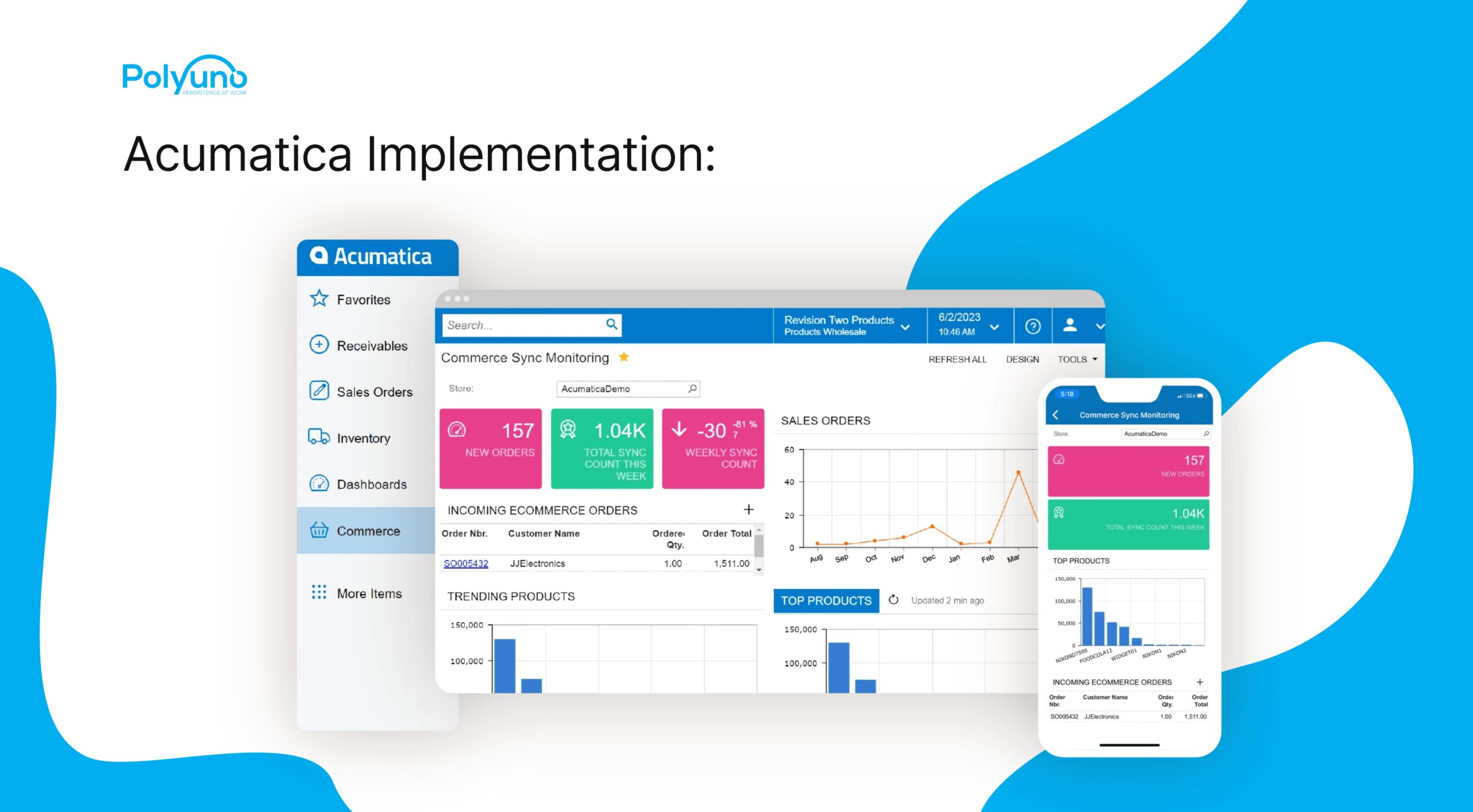
Quality Assurance or QA is a crucial step in the software-making process. Experienced software development teams such as the ones here at Polyuno know that QA cannot be compared to or replaced by techniques such as Software Testing or Quality Control. It is an entirely unique process with specific stages and methods. This article has everything you need to know about Quality Assurance in software development.
What is Quality Assurance (QA)?
Quality Assurance (QA) is a process that concentrates on identifying and maintaining requisites for developing reliable software products. A seasoned QA system boosts a company's credibility and helps promote customer confidence in the products, enhances workflow efficiency, and offers the company and its products an edge over its competitors.
The main idea behind QA is to make sure the product produced meets certain preset standards. These standards have been set by the International Organization for Standardization (ISO). All upstanding companies use the standards set by ISO 9000 to ensure their QA systems are up to par.
QA vs Software Testing
On the surface, Quality Assurance and Software Testing are two very similar processes. Both processes aim to deliver top-quality software that meets certain requirements. However, in actuality, they are distinctly different from each other.
QA processes are designed to ensure the quality of the product is on par with what the client had asked for. Quality assurance experts work on both the development and implementation of systems that provide that the team follows all the software development lifecycle's essential procedures. QA is a continuous process focusing on process development and constant improvement.
On the flip side, software testing mostly focuses on identifying mistakes and errors in the software. Testers apply stringent testing processes to the software to investigate whether any variations from requirements or defects need to be taken care of before release. Technically, testing is a small part of the overall quality control and assurance process.
Quality Assurance vs. Quality Control
Despite the inherent differences between these two processes, they are often confused for each other because of their similar names. Quality Assurance is all about prevention, whereas Quality Control (QC) is all about correction. QA primarily ensures that there is nothing that may go wrong with the product, whereas QC is all about fixing any problems that may arise with the product.
Importance of maintaining software quality
QA is a crucial step in the software making process. Both QA and software development help produce and deliver products that meet and perform according to customer requirements. It allows for premium quality market offerings, which, in turn, result in customer loyalty and retention. By following the guidelines and standards set by QA programs, software developers can prevent product defects before they even arise.
The Quality Assurance process is comprised of multiple subtasks. A good QA team like Polyuno completes these subtasks with a keen eye for details to deliver the best quality product possible. Good QA teams always need to stay up to date as the QA requirements are ever-changing and the software being produced must meet these requirements. They also need to ensure that any new conditions don't negatively affect the software.
Important Terminology
The primary purpose of this article is to explain the ins and outs of software Quality Assurance. Before we get into the stages involved in the process, there are a few terms you should familiarize yourself with.
Automation Testing
Testing that is done with pre-written scripts designed to control the execution of tests.
Black Box
These tests do not look within the system under test but treat it as 'closed' in the same way that the end-user will experience it.
Defect
Any divergence from an application's specifications; often called a "bug".
Exploratory Testing
Exploratory testing is an unscripted testing method, which depends on the tester's unique ability to find hidden bugs and identify any possible deterioration.
Integration Testing
Testing separate components/modules together to make sure they connect and interact correctly with each other.
Negative Path Testing
A testing scenario outlined to produce an error state in a feature/application and verify that the error is handled gracefully.
Regression Testing
Testing is done on a brand new build to make sure that new functionality has not accidentally broken formerly tested functionality.
Smoke Test
An honest approach to testing intended to certify basic functionality is working before more in-depth testing takes place.
Test Case
Specified prerequisites, steps, and expected results referred to by a QA tester/engineer to ascertain whether or not a feature performs its function as expected.
The White Box
The White Box refers to tests performed within the codebase, at a structural level. Programmers investigate that the inputs to and outputs from certain functions or parts would be white box testing.
The White Box is also known as 'Clear Box', 'Glass Box', or even 'Transparent Box' because the tester can 'look into' the system under test.
The main categories of White Box are
- Integration tests (units/components communicate with each other properly)
- Unit tests (separate units of code do what they should)
- Regression tests (re-doing tests at later stages of software development to make sure they still work)
Agile
Software produced through Agile has the capability of iterative improvement. This makes QA processes an essential part of the software development cycle.
If the development team tests the software at every stage of development, bugs or defects upon release remain minimal.
Stages of QA processes

The entire Quality Assurance or QA cycle is comprised of 6 stages as listed below-
- Requirements analysis
- Test planning
- Test design
- Test execution and defect reporting
- Retesting and regression testing
- Release testing
1. Requirement Analysis
It costs 15 times more to fix any mistake made during the requirement design stage. Therefore, QA team members must analyze and clarify the functional and non-functional software requirements. They need to ensure that the conditions are complete, consistent, transparent, testable, and traceable. This prevents possible future software defects and helps upcoming test design exercises.
2. Test planning
Knowledge gained at the Requirement analysis stage is the basis of the Test planning stage. A test plan usually contains a test strategy that covers a testing scope along with budget and deadlines. Other factors included in the test plan are things like the types and levels of testing the software requires, reporting procedures, bug tracking, etc.
3. Test design
QA professionals put together test cases or test checklists covering all the software requirements set in the previous two steps. Test cases draft conditions, test data, and the test steps needed to verify a particular functionality, and state a proposed test result. Test engineers often approach test designing with a certain level of experimentation to familiarize themselves with the functionality of the software and come up with the best possible approach to test design.
Once the test automation has been designed, test automation engineers create test automation scenarios.
A test environment is also prepared to help with test case execution. The test environment is a close mock-up of the software's production environment and the hardware, network configurations, available databases, operating system settings, and other possible characteristics of the products.
4. Test execution and defect reporting
Test execution starts at the unit test level. Manual test engineers then execute the designed test cases, and report any defects they find to the defect tracking system, and test automation engineers use a selected framework to run automated test scripts to generate test results.
5. Retesting and regression testing
Test professionals retest questionable functionality and perform regression to make sure all the bugs have been fixed with little or no effect on the software's functionality. Retesting and regression is also the stage at which test engineers recheck to ensure that the product still matches all the customer's preset requirements.
7. Release testing
The test team identifies any variance or software functionality that has been affected by the changes after the development team issues a release notification. The release notification is usually a list containing fixed defects, implemented features, limitations, and problems. The test team then performs smoke testing to ensure the build is stable, and once the build passes the smoke test, the identified test suites are executed, and test result reports are published.
How do you set up the QA process?
To set up an efficient QA process for a product, you need to internally hire a team of QA consultants or reach out to companies such as Polyuno to help with the QA process.
Common mistakes QA teams make during software development
Below is a list of some of the more common and widespread problems that often plague the proper functioning and performance of QA teams -
Inability to analyze the manifestation of the defect: When QA teams fail to analyze defects, there's an increased chance of repeating the same mistake.
A good QA professional isn't afraid to ask questions because they need to make sure they don't leave a loophole.
Automation can be tricky: Only the most experienced and advanced QA teams go straight into using automation tools. Most teams start with semi-automated solutions.
Disregarding user experience: The product ultimately is designed for the customer. And the QA team must go above and beyond simple testing strategies to ensure the best possible user experience.
Having trouble collaborating: QA teams often have difficulty working with the software development team. An experienced QA team knows that their job is to provide necessary feedback so that the software development team can make the best possible product.
Conclusion
Quality Assurance is a lengthy process. Expert QA professionals like Polyuno are aware of all the possible pitfalls of the process, know how to overcome them, and provide the best quality software that meets all customer requirements. So, make sure you choose a QA professional that caters to your requirements.




